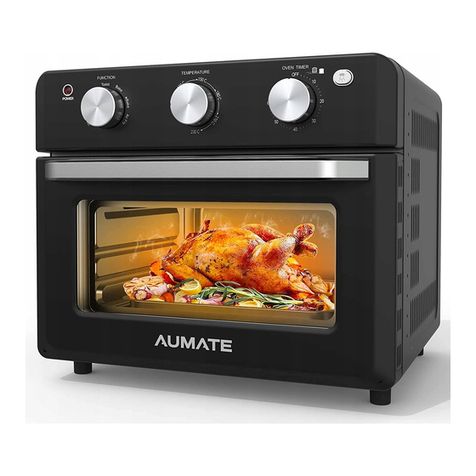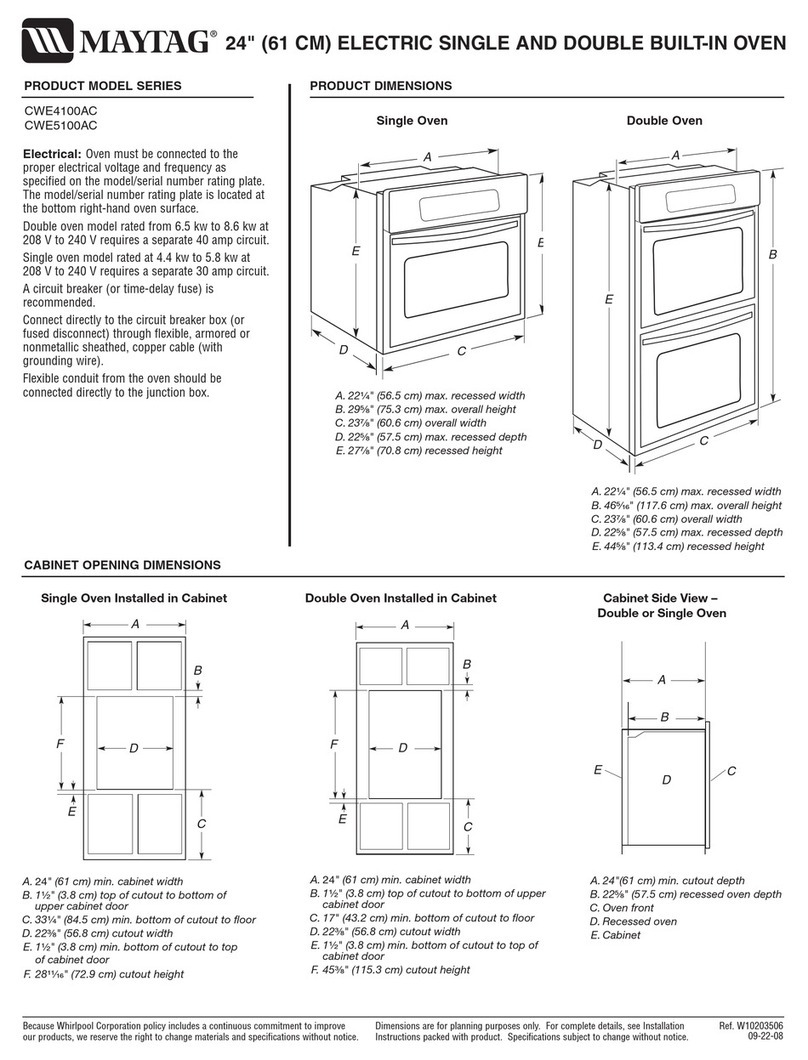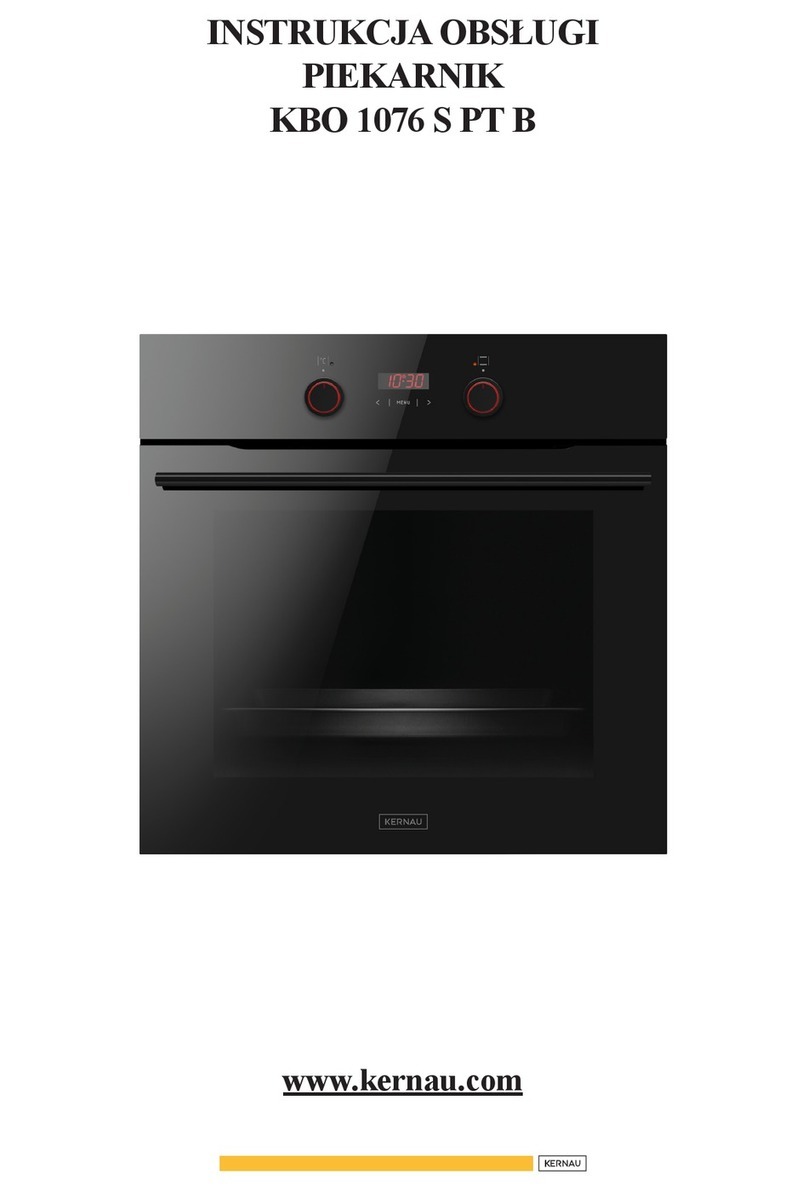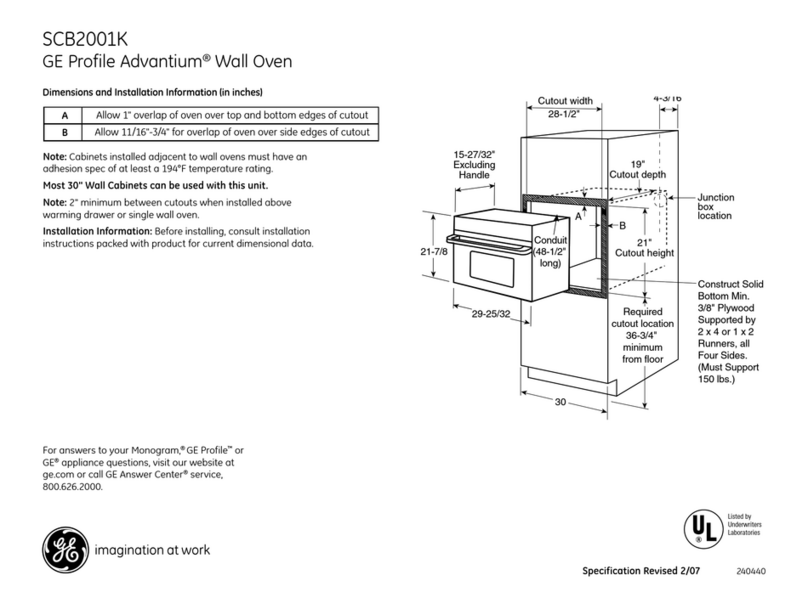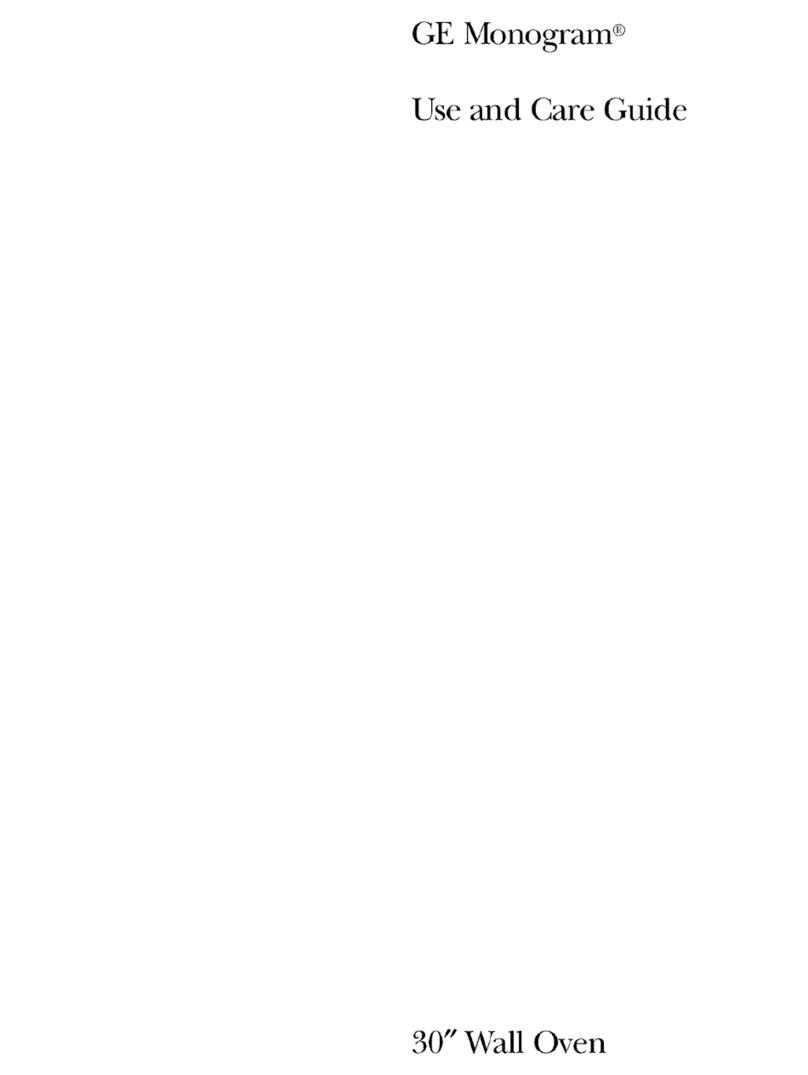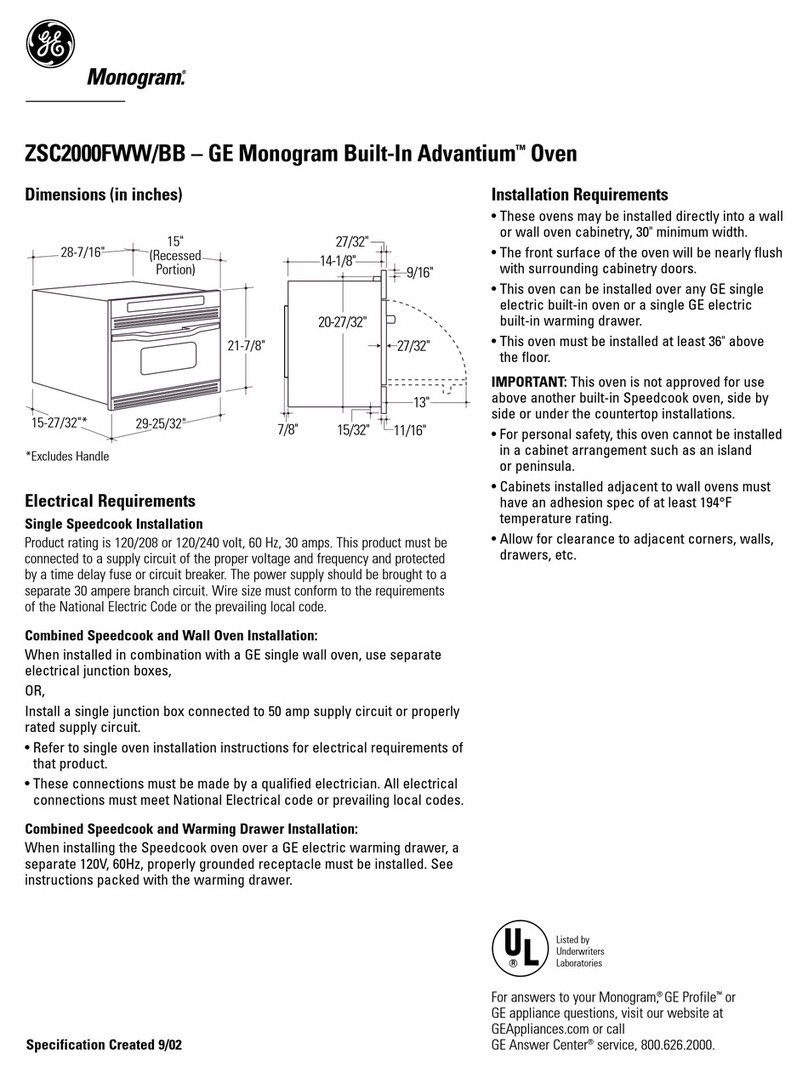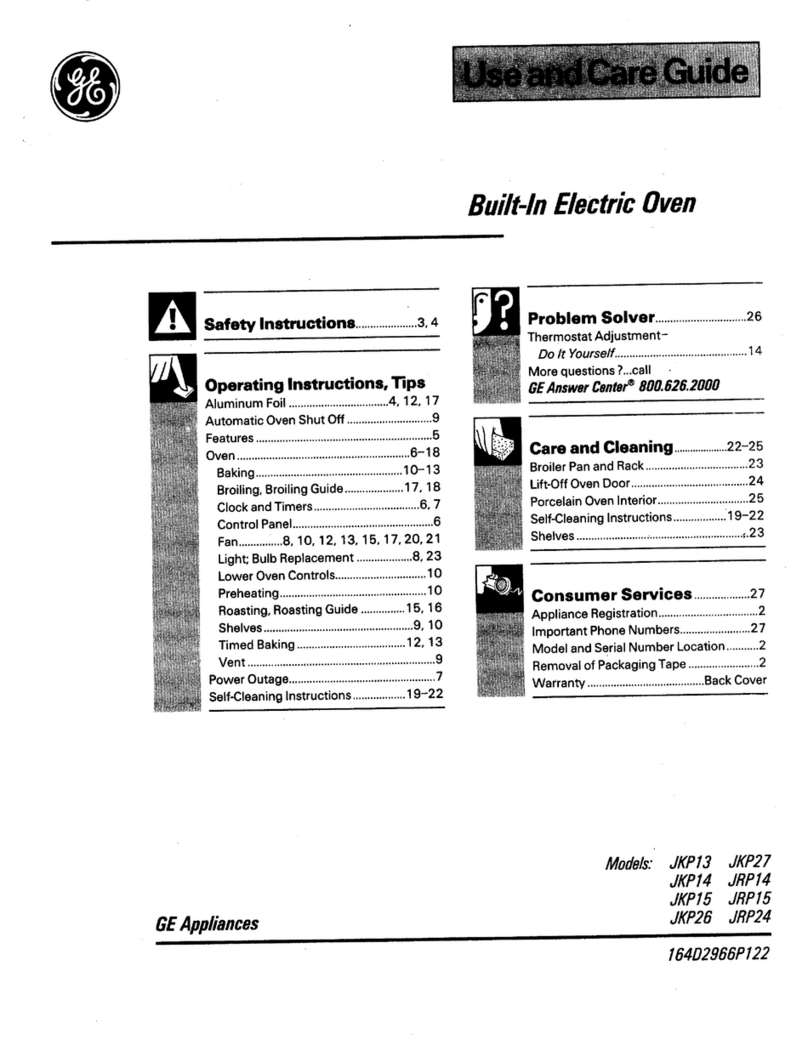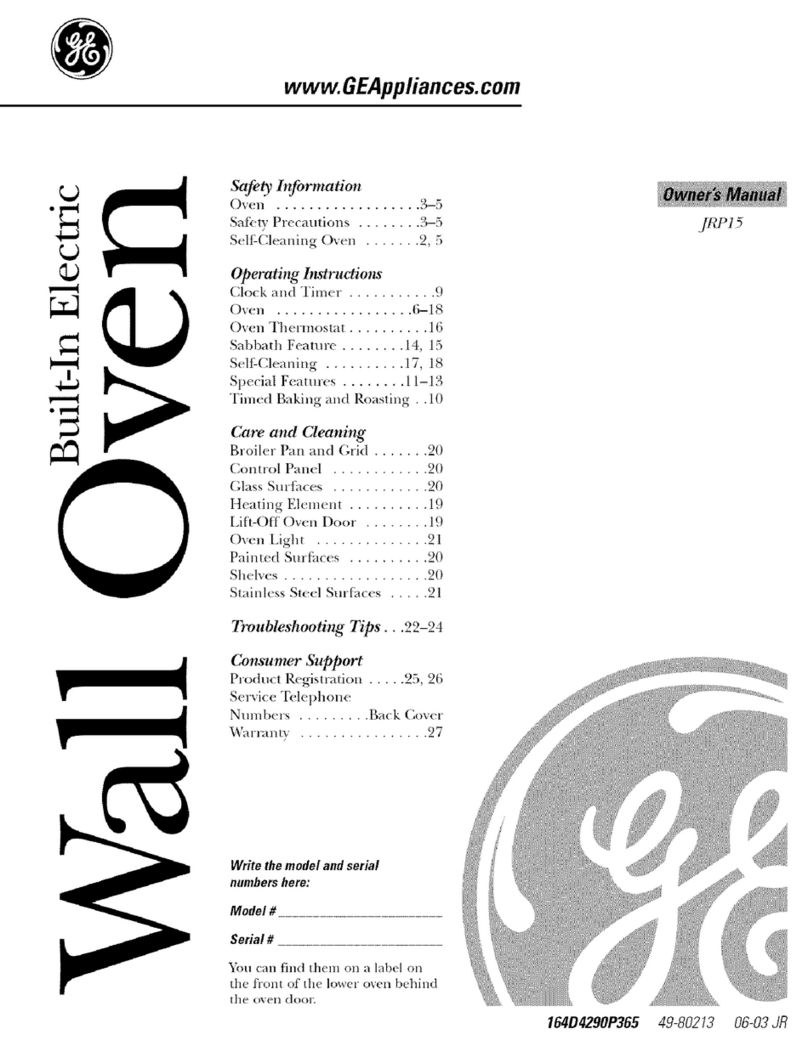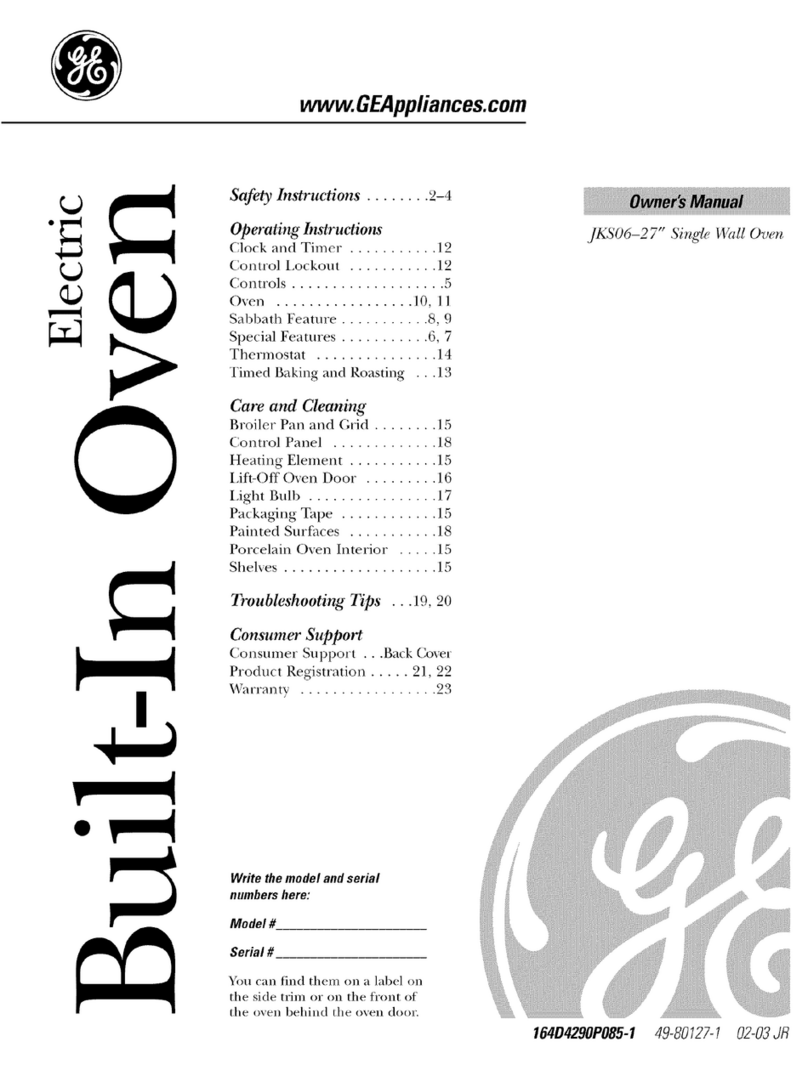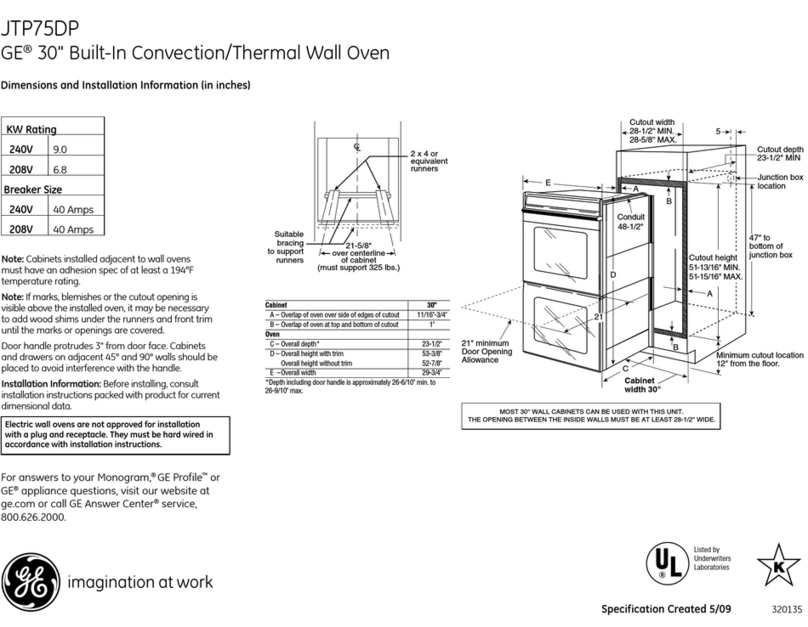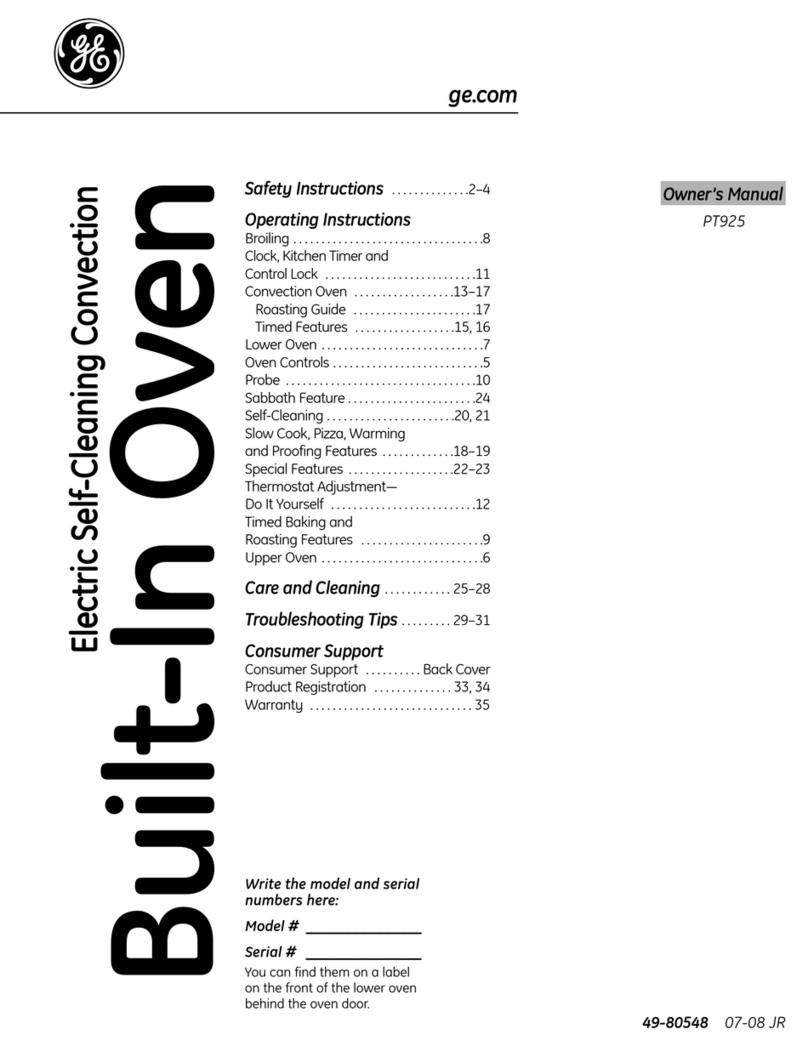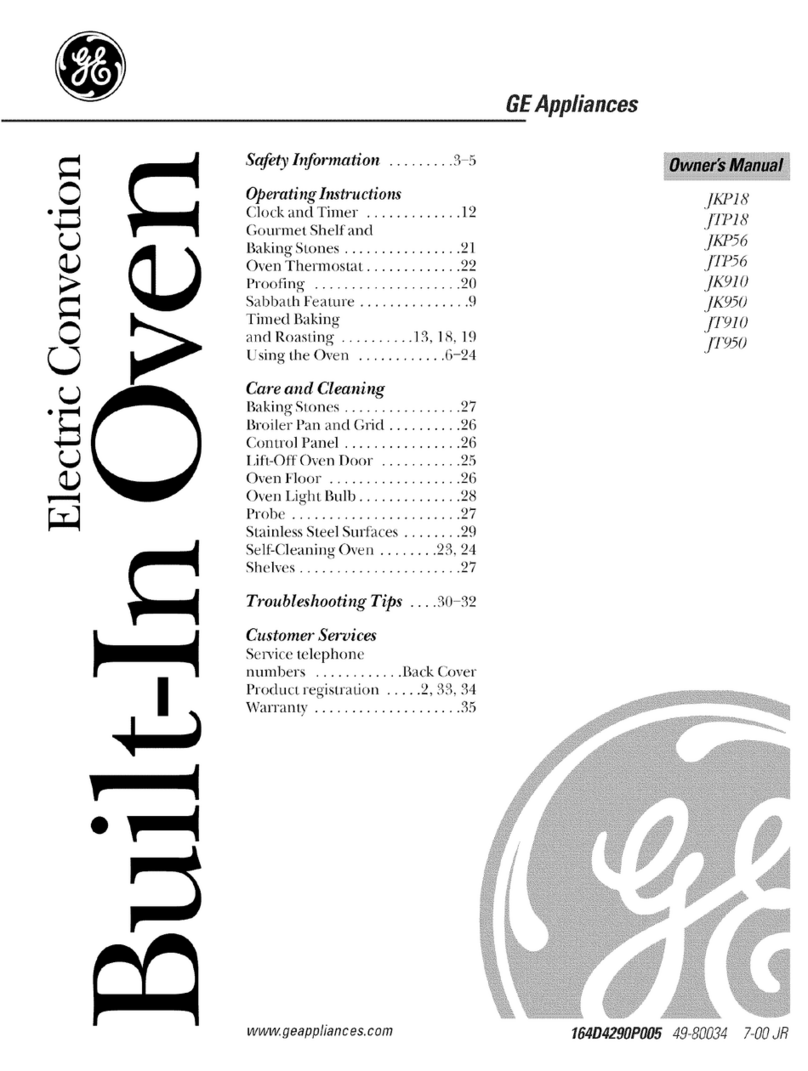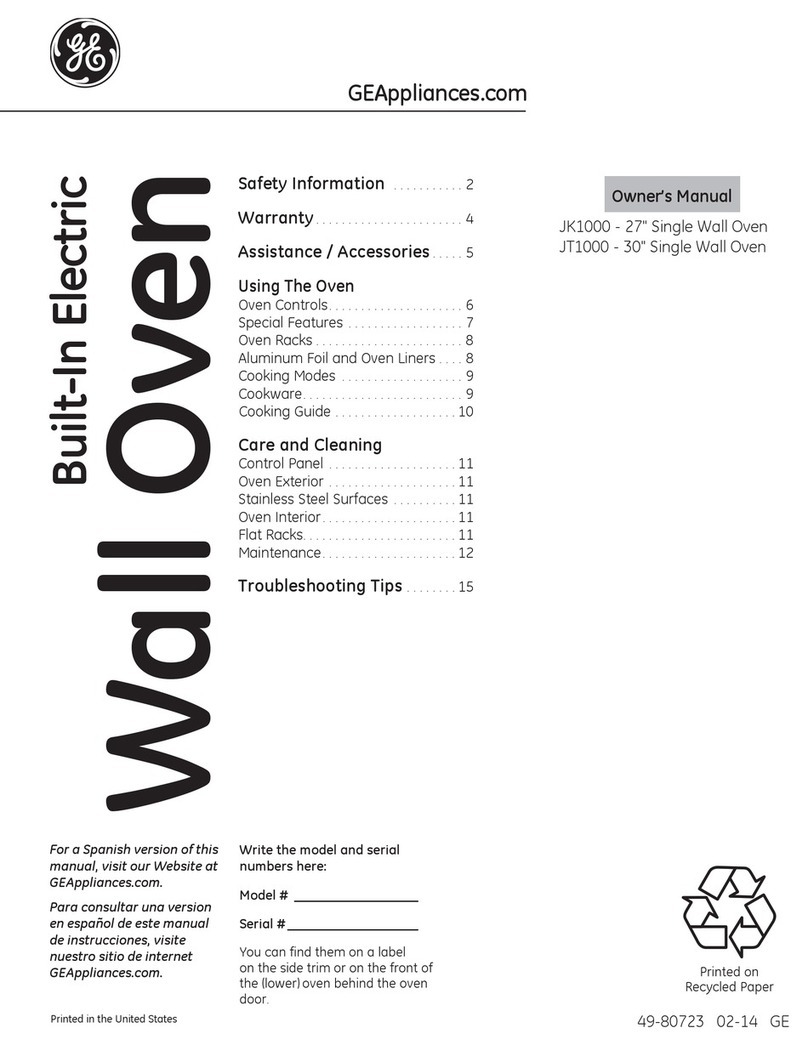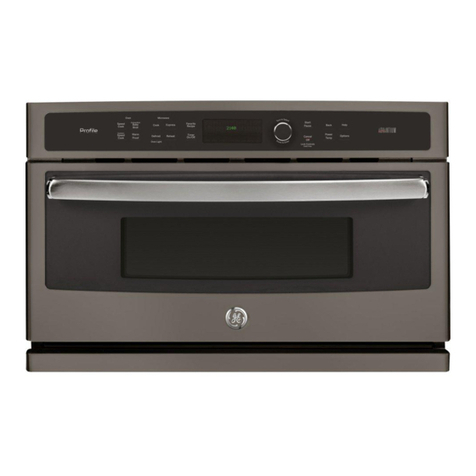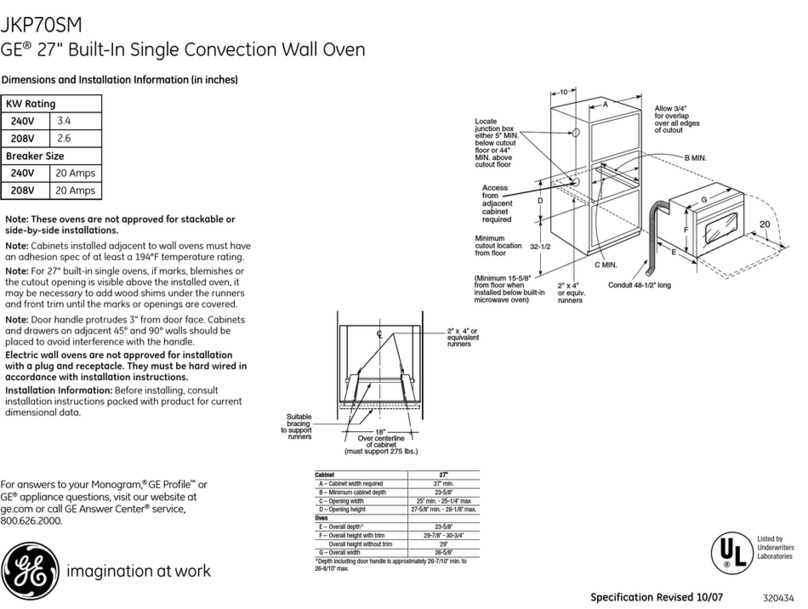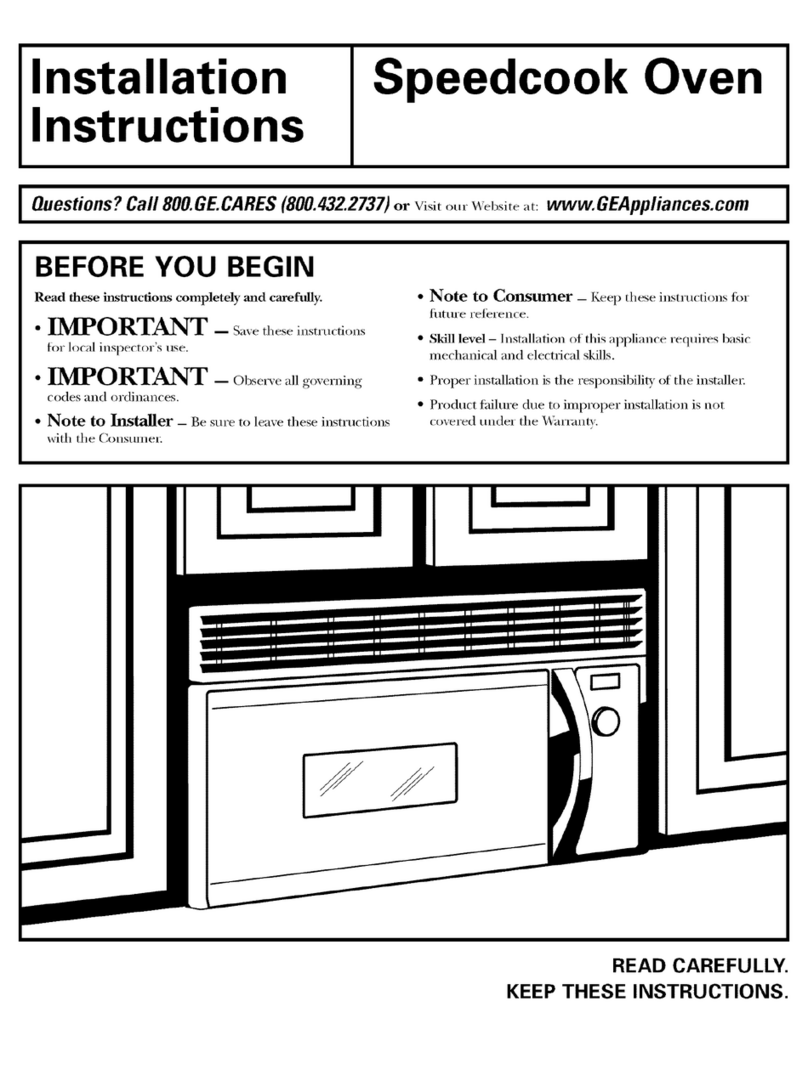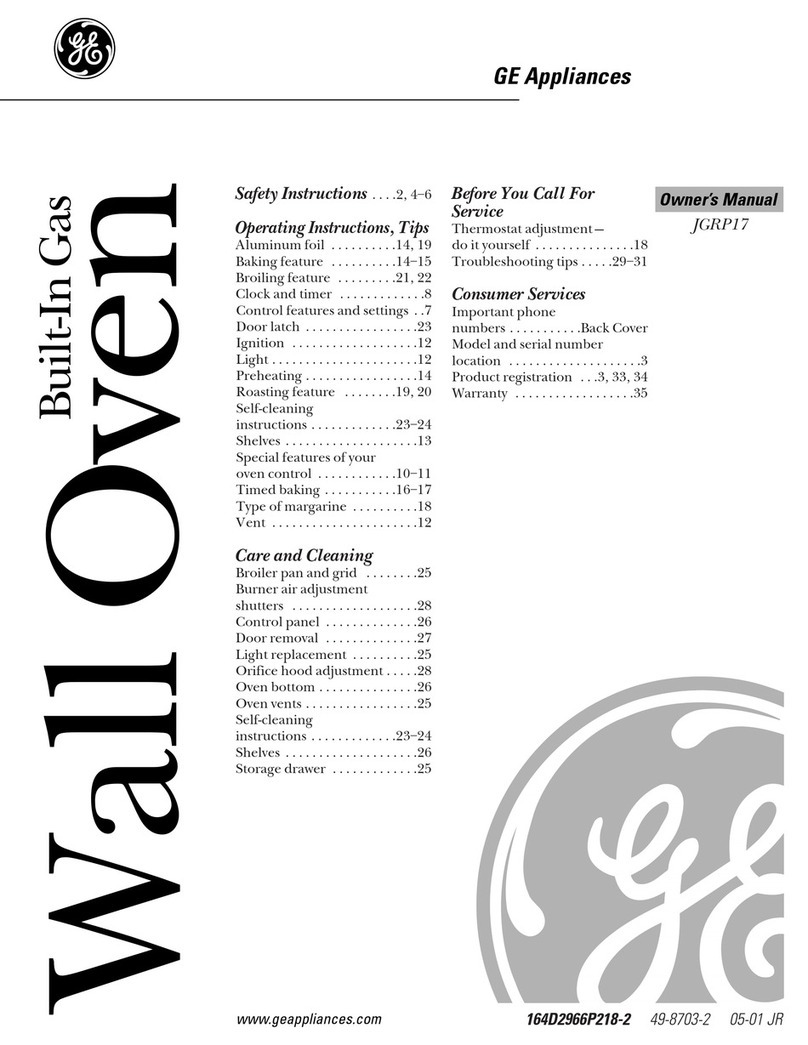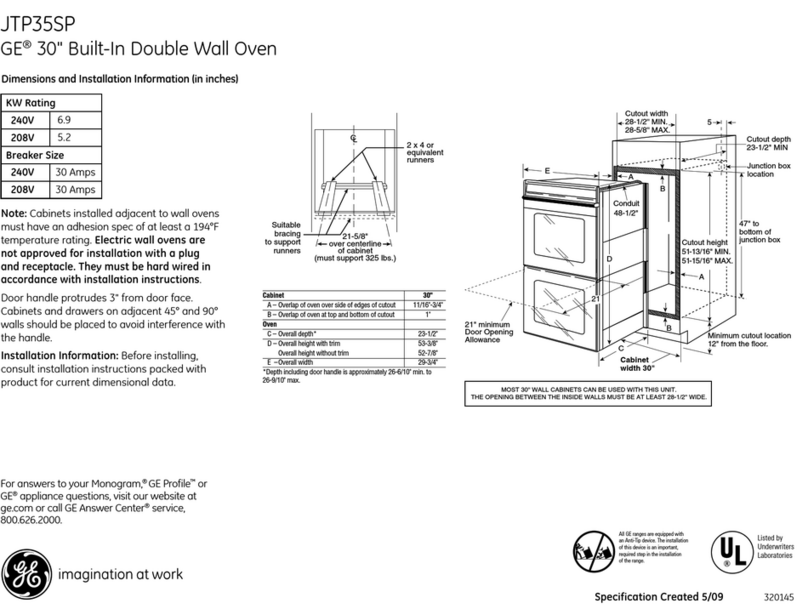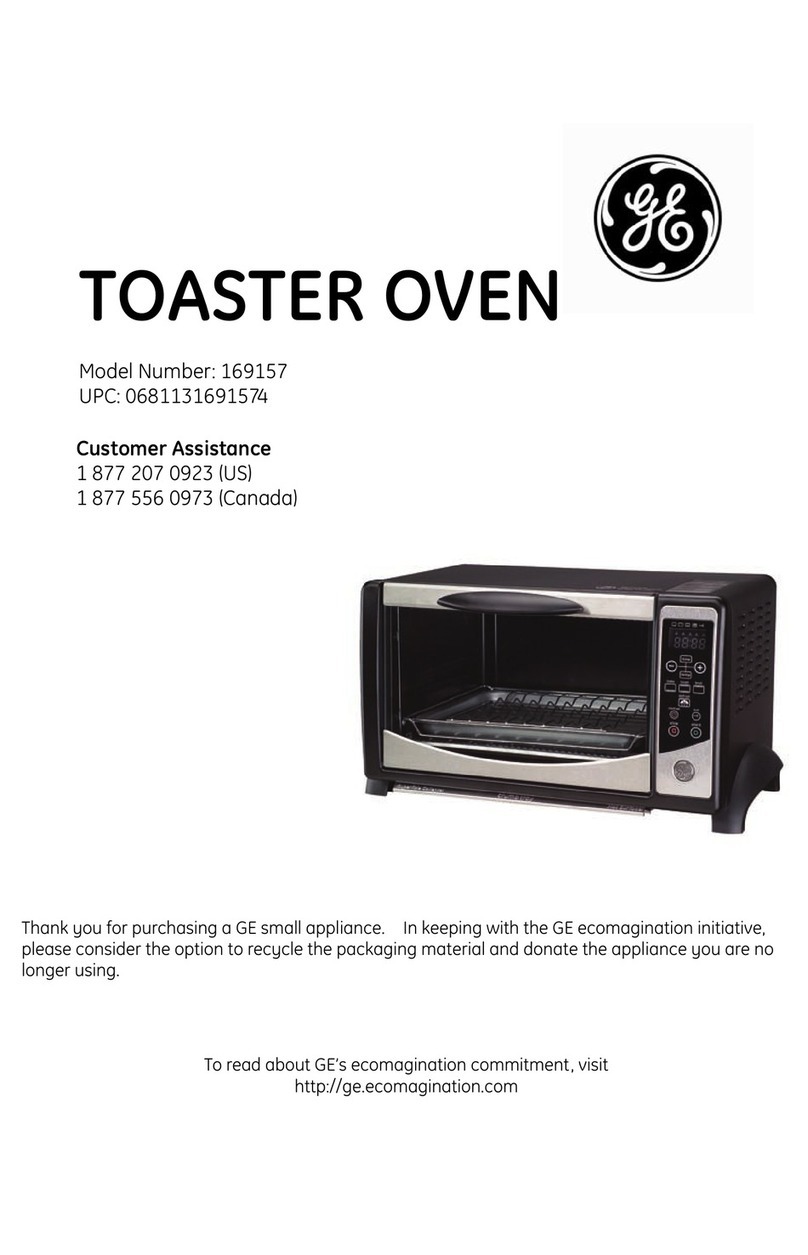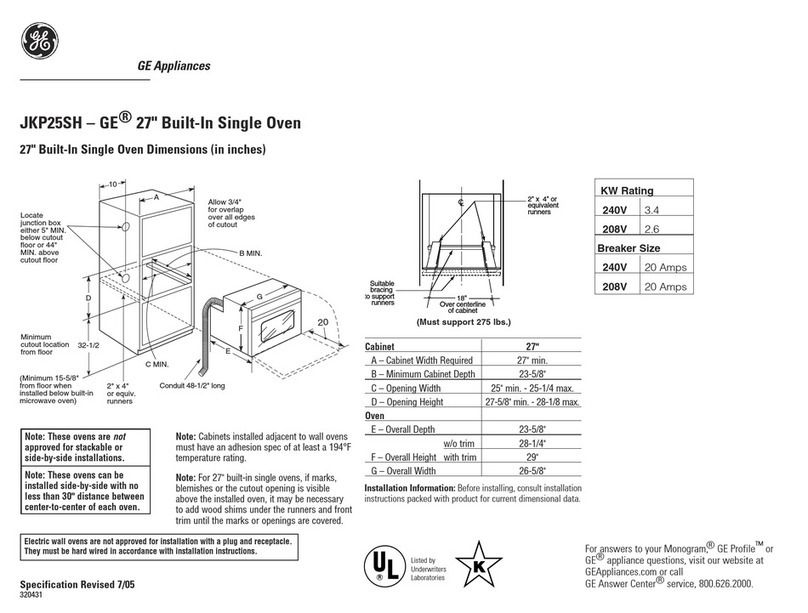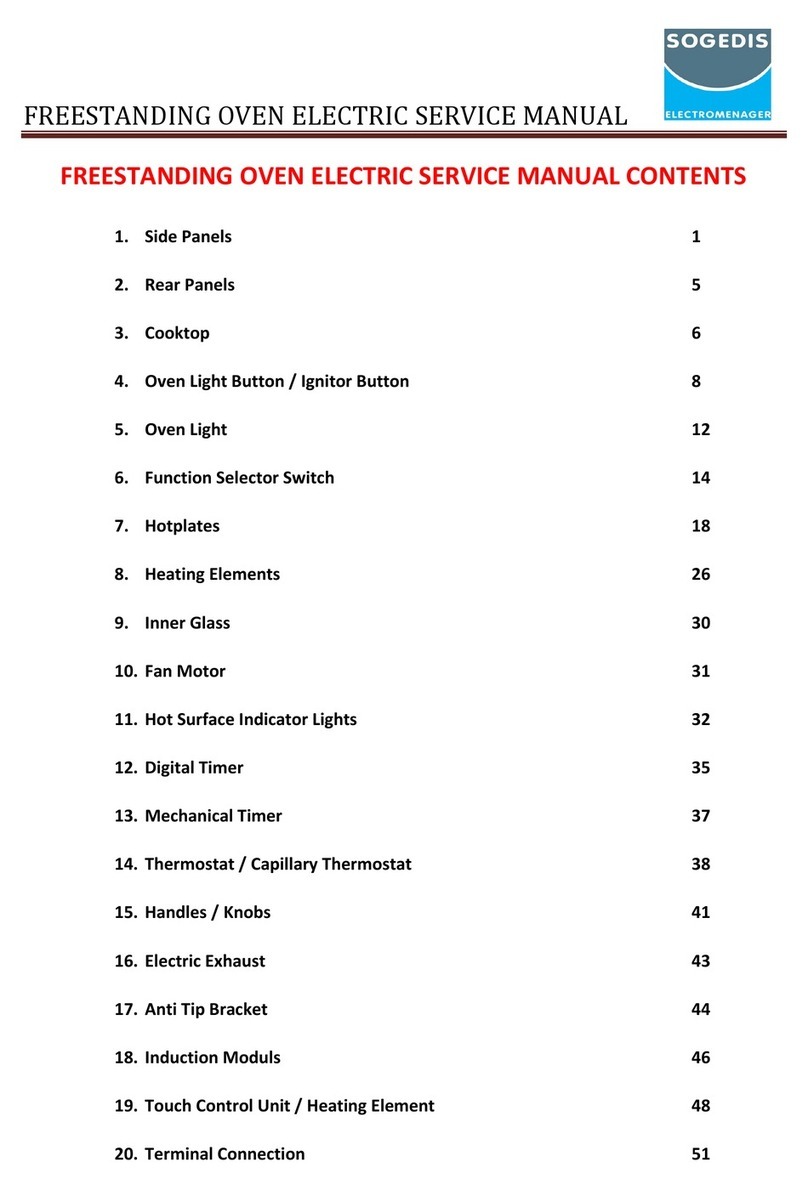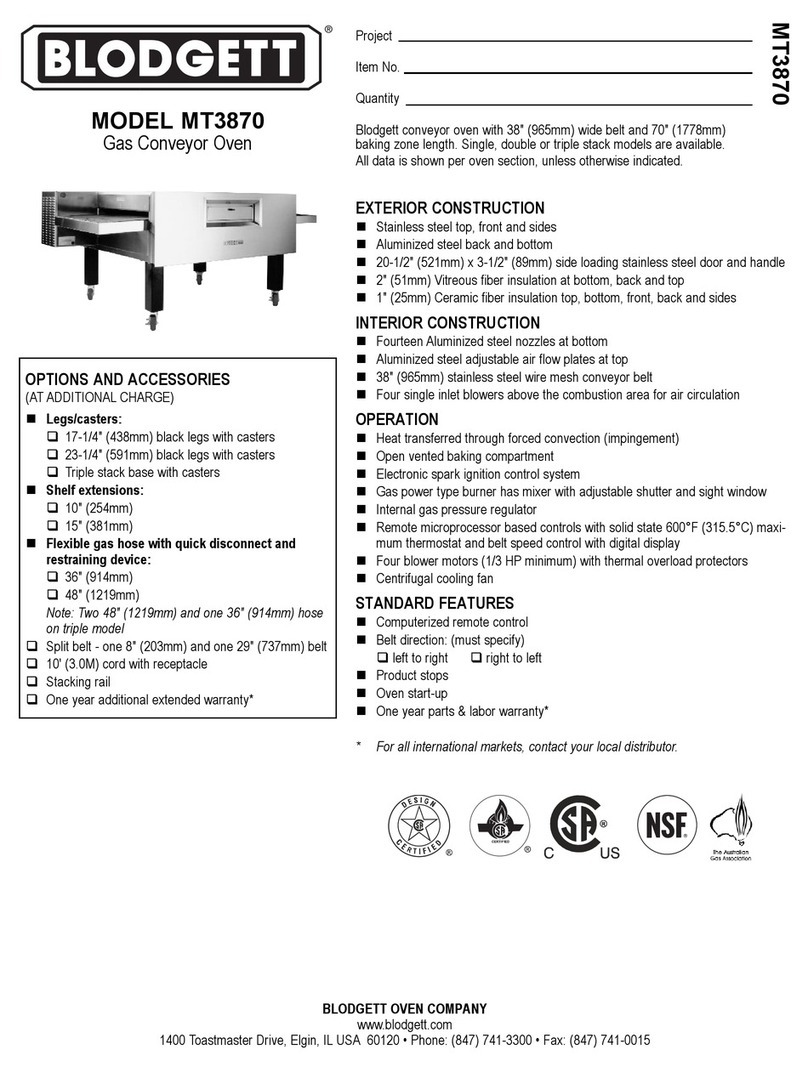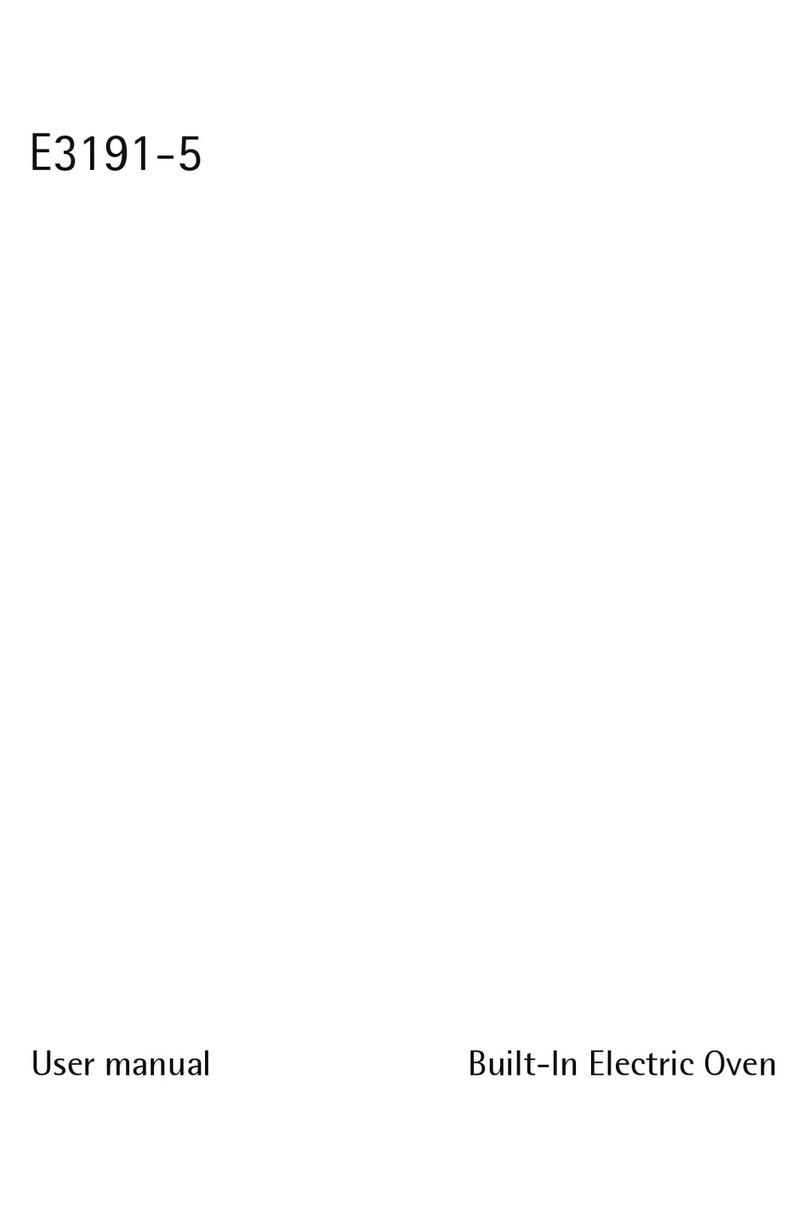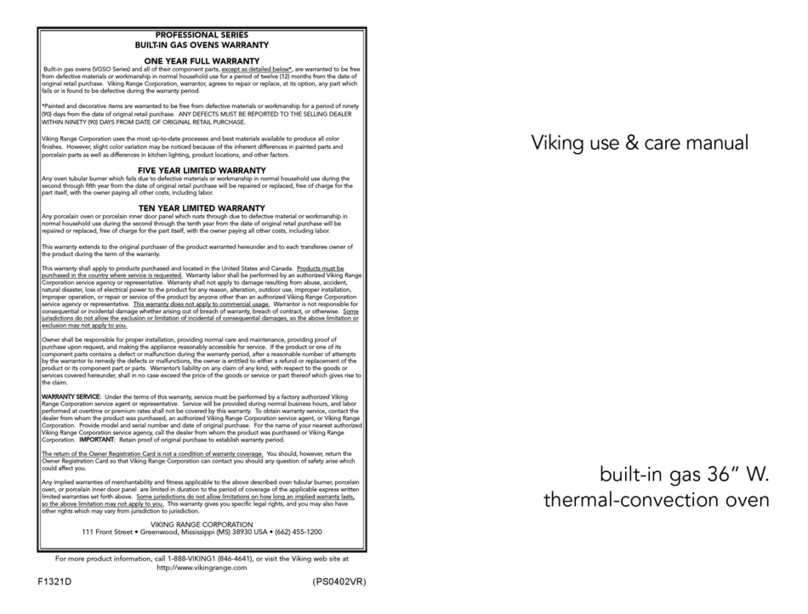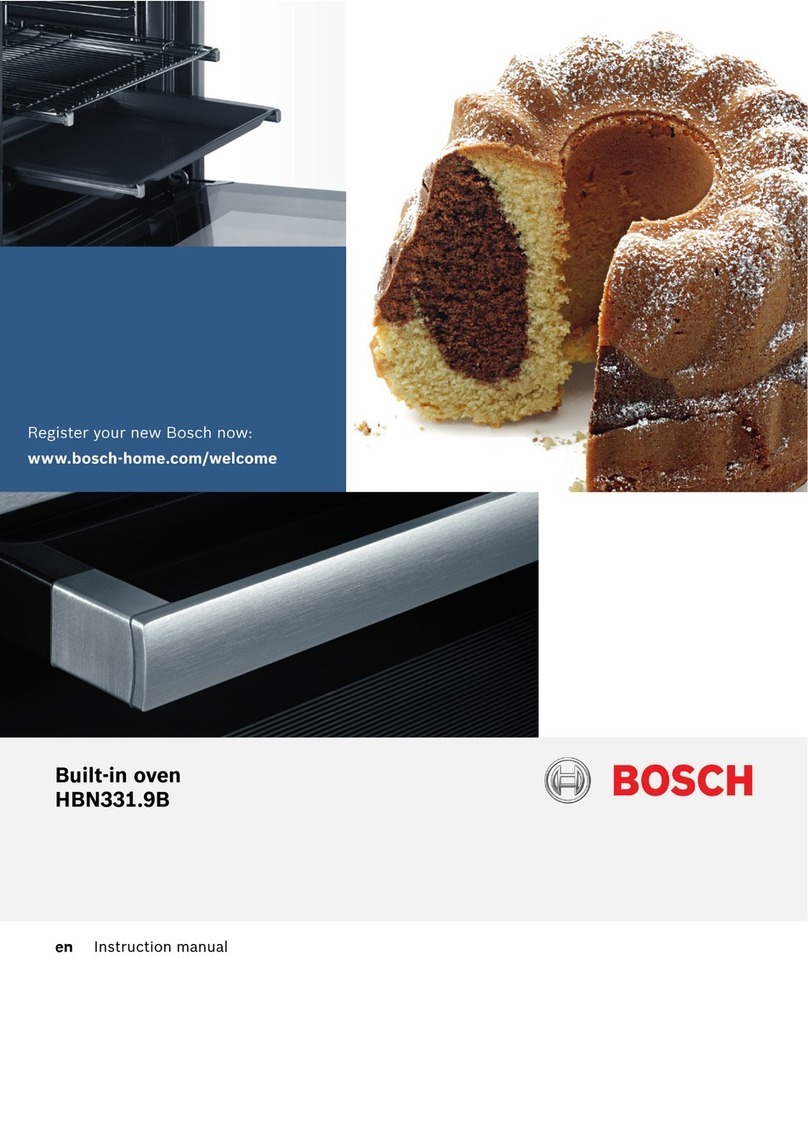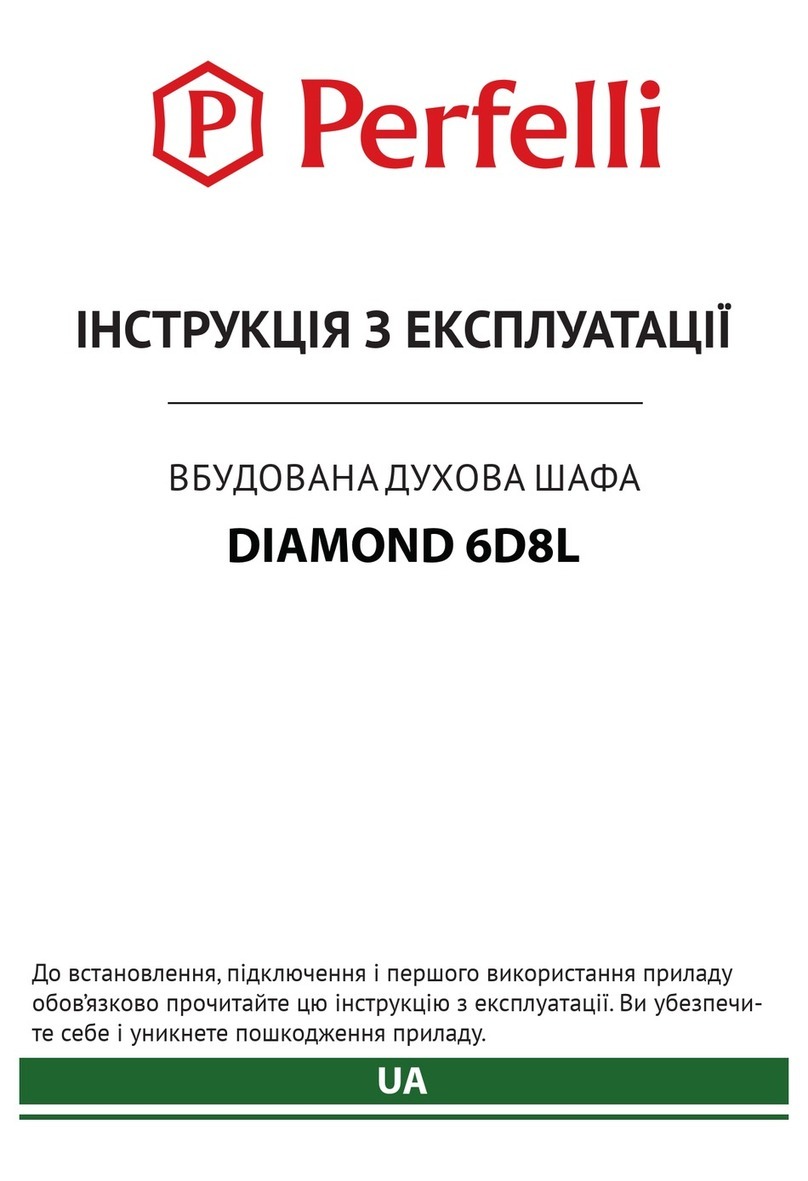
JGB650 SINGLE OVEN
31-17081 06-13 GE
OVEN TEMPERATURE CALIBRATION
The bake temperature can be adjusted from its factory calibration (+or -)
35˚F in 1˚ increments.
1. Press and hold both the BAKE and BROIL pads for about 2 seconds
until the display shows SF.
2. Press the BAKE pad. The current offset setting is in the display.
3. Enter the desired temperature offset using the number pads.
4. Use the BAKE pad to toggle between +/-.
5. Press START key. The display will return to Time or Day Clock.
BAKE BURNER REMOVAL
• Remove oven door and drawer.
• Remove the screws on the oven oor at the back of the oven cavity and
remove oven oor/deector.
• Remove 1/4” hex head screws from the bracket holding the burner to
the back wall of the range.
• Remove the screw at the front of the burner.
• Disconnect the igniter wires.
• Remove the Bake Burner.
BACKGUARD DISASSEMBLY
• Remove screws located on the back of the backguard. (There is a set of
screws on each side.)
• Remove the torx screw on the front inside corner of backguard (1 on
each side).
• Gently lift backguard off.
• Be sure to reassemble rear cover and backguard per original assembly.
OVEN BURNER IGNITION SYSTEM
The ignitor is a “Norton” style rectangular glowbar. The ignition circuit
consists of the electronic control, the igniter, and the oven safety valve
(gas valve). The three components are wired in series.
The most important points to know about the ignition system are:
1. THE IGNITOR RESISTANCE DECREASES AS THE IGNITER SURFACE
TEMPERATURE INCREASES.
2. THE SAFETY VALVE OPERATES BY CURRENT, NOT VOLTAGE.
From a cold start, the ignitor needs 30-60 seconds, with voltage applied, to
reduce the electrical resisteance enough to provide a minimum of 2.9 amps
of current ow in the series circuit. This is the required current ow needed
for the safety valve to open to supply gas to the burner. The glowbar should
provide a steady current ow of between 3.2 to 3.6 amps owing in the circuit.
The igniter will remain energized at all times during burner operation. If the
igniter glows red but does not draw at least 2.9 amps, the fault is usually with
the igniter, not the valve. Always check the oven shut-off valve for a “No Oven”
condition.
CONTROL SYSTEMS
There are three versions of the control used on gas ranges. Versions 1, 2 and
3. Features and appearance will vary by model:
Version 1
Has Delay Start and Cook Time features.
Version 2
Has Delay Start, Cook Time and Self Clean features.
Version 3
Has Delay Start, Cook Time, Self Clean and Convection Bake features.
GLOWBAR IGNITION CIRCUIT
L1 N
120 V
T´STAT
T1 to 1.2 Ohms
GLOW BAR
IGNITER OVEN
VALVE
IGNITER GLOWBAR REPLACEMENT
The igniter glowbar and its protective cage are one assembly on
this Norton style igniter. The round Carborundum igniter CANNOT be
substituted for the rectangular Norton Igniter.
• Remove the burner from
the oven. See Bake Burner
Removal in this manual.
• Remove the 1/4” hex head
screws securing the igniter
to the burner.
• Remove the old igniter.
• Install the new igniter and
re-install the two 1/4” hex
head screws to secure the
igniter.
• Reinstall the burner.
WIRING DIAGRAM
WARNING Power must be
disconnected before servicing this
appliance.
222D8441P002
FAILURE MEANING CORRECTION
CODE
SHORTED
CANCEL/OFF KEY
Power down then power up the range. If the fault
condition reappears within 15 minutes–REPLACE
CONTROL.
OVEN
OVERTEMPERATURE
CONDITION
• Door unlocked–oven
exceeded ~620°F
• Door locked–oven
exceeded ~930°F
• Door latch unlocked
while oven in excess
of ~620°F
1. If no overtemperature condition occurred–check all
contacts and connections in sensor circuit. Eliminate
excessive resistance in sensor circuit due to increased
contact/connector resistance.
2. If overtemperature condition occurred–look for
welded relay contacts on bake, broil, or double-line-
break relays. If relay contact welding is confirmed–
REPLACE CONTROL.
3. Ensure Door Latch stays locked for duration of CLEAN
cycle.
F2
OPEN OVEN SENSOR
Sensor resistance
>2900 ohms
Disconnect sensor/latch connector from the control.
Measure sensor circuit resistance at sensor/lock switch
connector (should be ~1100 ohms at room temperature).
Ensure each sensor lead to chassis ground resistance is
infinitely high.
If open or short circuit is detected:
1. Look for cut or pinched sensor harness wire.
2. Look for sensor leads shorted to chassis ground.
3. Look for loss of terminal contact in the harness and at
the control.
4. Check sensor resistance directly at sensor harness
connector (away from the control). If reading is
abnormal–REPLACE OVEN SENSOR.
If sensor circuit appears to be normal:
1. Reinstall sensor/lock switch connector on the control
and measure sensor resistance at solder joints on
the back of the control circuit board. If abnormal
resistance reading is observed–RESTORE CONTACT
PRESSURE OR SENSOR/LOCK SWITCH CONNECTOR.
If corrective actions above do not eliminate the
problem–REPLACE CONTROL.
F3
SHORTED OVEN
SENSOR
Sensor resistance
<950 ohms
F4
SHORTED MATRIX
KEY
Power down then power up the range. If the fault
condition reappears within 15 minutes–REPLACE
CONTROL.
F7
EEPROM ERROR Power down then power up the range. If the fault
condition reappears within 5 minutes–REPLACE
CONTROL.
F8
CONTROL
SUPERVISORY
CIRCUIT FAILURE
REPLACE CONTROL.
F5
F0
T09 FAULT CODES
1100 OHMS@ROOM TEMP
2650 OHMS@CLEAN TEMP
OVEN SENSOR
PINS 4 & 5
DOOR LOCK CIR.
PINS 1 & 3
DOOR LOCK CIR.
PINS 1 & 3
PIN 2 BLANK
CNC
LATCH
BI-METAL
(THERMAL
LOCK
SWITCH
UNLOCK
LOCK
LOCK
COLOR SYMBOL
LAST
NUMBER USED
RED R3
WHITE W10
ORANGE O2
YELLOW Y2
VIOLET V2
BLUEN 2
GRAY S-
BROWNC -
BLACK B-
BLACK/WHITE B/W -
200 C
200 C
R
ELECTRONIC CONTROL
COM
150 C
150 C
MD
SW
V
150 C
V
V
150°C W-7
VALVE
CONTROL
IGNITOR
BAKE
R150 C
RF
SW
150 C
V
V
BROIL
IGNITOR
R
SENSOR
OVEN
150 C
1
2
D
LF
SW
NC
LR
150 C
LR
SW
V
V
ELECTRODE
MD
Y-2 250 C
200 C
IGNITION
MODULE
ELECTRODE
LCH SW
LF
O-2
1
250 C
1
W-9
5
W-8
5
150 C
150 C
N-2
W-6
Y-1
2
1
E
W-8
W-9
200 C
200 C
150 C R
R-3
V-2
C1
N-1
150 C W-2 125 C
150° C N-2
W-5
O-1
LIGHT
OVEN
150 C
150 C
W-3 125 C
V-1
R-2 125° C
125 C
2
R-2
W-4 125°C
125 C
B/W
N
A
2
L1
1B
G
Y-1 150°C
R-1 125°C
W-1 125°C
N-1 150°C
W-1
125 C
NO
F
B
W-10
0-1 150°C
125 C
R-1
150 C
GND
GND
L
BR
BA N
OL
W-1
W-2
W-6
W-5
150 C
RR
SW
V
RR 200 C
ELECTRODE
RF 200 C
NOTES:
ALL LEADS WITH DESIGNATION
NUMBERS THAT ENTER COMMON
LEAD PATH( ) MUST BE
TRACED TO THEIR TERMINATIONS.
- - - -THIS CIRCUIT NOT IN ALL MODELS.
W-3 125°C
V-1
N
L
125°C

